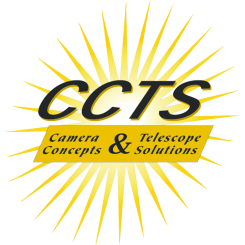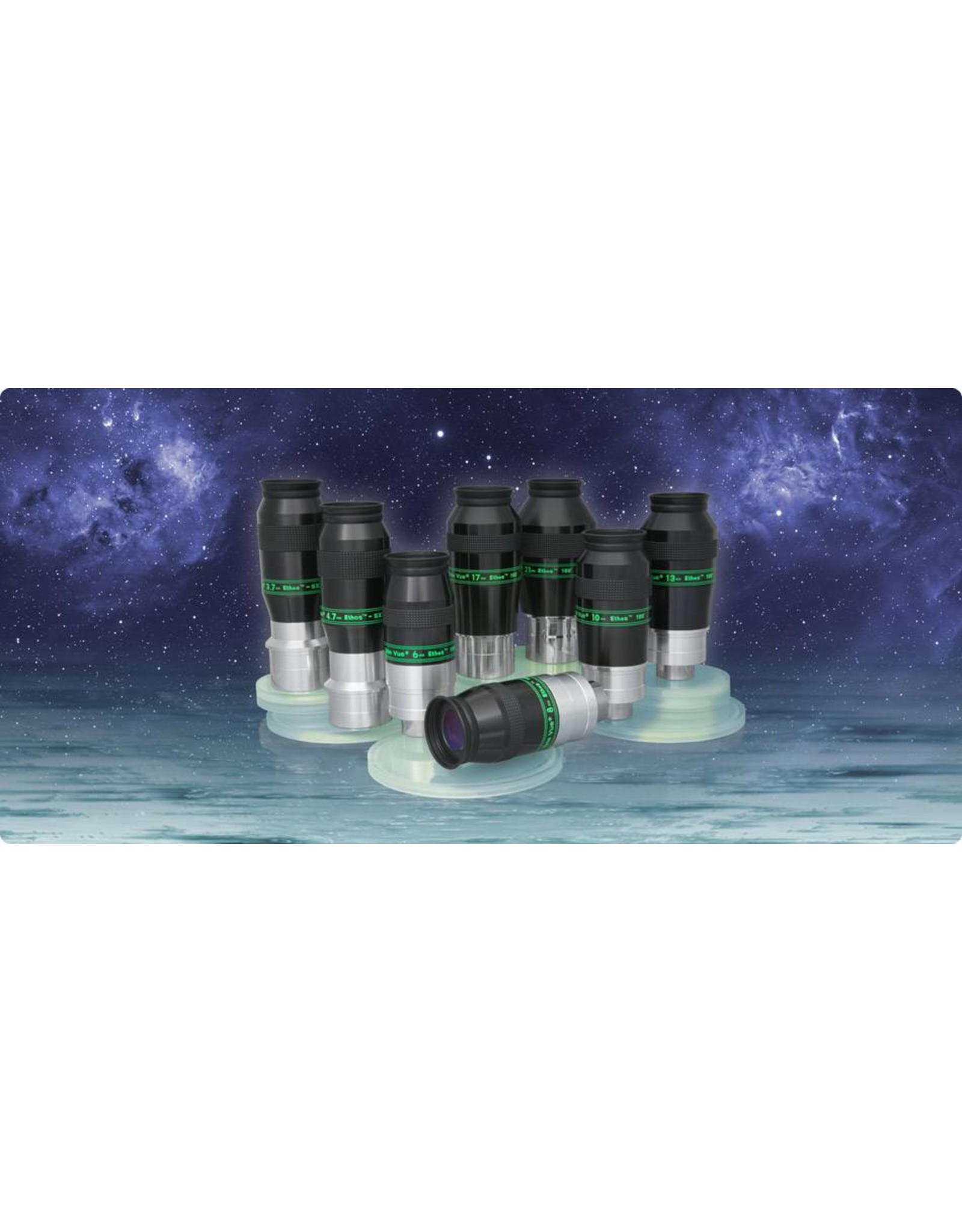Tele Vue 8mm Ethos Eyepiece - 1.25"/2
| Article number: | ETH-08.0 |
| Availability: | In stock |
| Delivery time: | In Stock |
* Sky & Telescope Hot Products 2010 WInner!
* The Televue 8mm Ethos eyepiece provides a 100° apparent field for a true "spacewalk" view of the night sky.
* Distortion correction, high contrast and on-axis sharpness for planetary viewing.
* Televue 8mm Ethos eyepiece provides a generous 15mm of eye relief for comfortable observing.
* Accepts DIOPTRX eyesight astigmatism correctors.
* The Televue 8mm Ethos eyepiece will fit either 2" or 1.25" barrel sizes and weighs 0.95 lbs (15.2 oz.).
* Dramatic high magnification views combine with stunning wide field backgrounds suitable for use with binocular viewers.
| 8-mm | |
| Model # | ETH-08.0 |
| Focal Length (mm) | 8 |
| Barrel Size (in.) | 2" & 1¼" |
| Apparent Field of View (deg.) | 100 |
| Eye Relief (mm) | 15 |
| Weight (lb / oz) | 0.95 / 15.2 |
| Field Stop (mm) | 13.9 |
In 1¼" mode, if you use Tele Vue's "high-hat" 2"-1¼" adapter, it will be parfocal with Tele Vue's Plössls, Radians, Type 6 Naglers, Nagler Zooms, 1¼" Panoptics and 6mm ETHOS. Further, its light weight and small diameter makes the 8mm suitable for anyone using a binocular viewer. Another application is for spotting scope set-ups with the Tele Vue 60° 1¼" diagonal.
"To illustrate the dramatic effect of combining a larger apparent field (yielding greater deep sky details) with smaller exit pupils (yielding fainter stars with darker sky background) we propose the "Majesty Factor". We define it simply as the cube of the ratio of any two different apparent field eyepieces having the same field stop diameters (same true field). Examples: (100°/70°)3 = 2.92 "M.F." or (70°/50°)3 = 2.74 "M.F." or(100°/50°)3 = 8 "M.F." After showing Ethos at a number of events since April 2007, we can safely conclude it brings the observing experience to a new level. This is based solely on user's reactions to views of familiar objects, not on any prejudgments, publicity or hype on our part. While we were quite confident of success, we wanted, and still want, to explore all the ramifications of what a sharp 100° field really represents. Right after NEAF in April, Rodger Gordon, the acknowledged "eyepiece junkie" of all time, wrote me "Definitely the finest wide-angle eyepiece I've ever seen. If God is an astronomer, this is the wide-angle eyepiece he'd choose. You can quote me." Thanks, Rodger. I waited until now to avoid "priming the pump", so to speak before quoting your unbridled enthusiasm publicly. For some time, I've been pondering just why the response has been so overwhelmingly positive. And if I really understand why, is it possible to quantify? My views of the Double Cluster at Stellafane pointed the way. The 1991 article I wrote for Sky and Telescope on magnification provides the key. A major conclusion for low power states: "The best view occurs with the highest power that comfortably includes the target object. Higher powers darken the background sky, reveal fainter stars and show more detail. The resulting smaller exit pupil also minimizes the effects of eyesight defects. Considering the potential of Ethos, let me posit a more general conclusion: For deep sky viewing of star fields, open and globular clusters, nebulae and galaxies, choose the highest power that frames the subject, so long as the sky background does not reach black, and the atmosphere does not degrade the resolution. The smaller exit pupils permit a darker sky background which achieves greater contrast against the fixed brightness of stars, while the greater magnification reveals more structural details on extended objects. Using eyepieces with larger apparent fields maximizes the viewing experience. The result is an increase in what I would call the Majesty Factor, the nexus of contrast, power and field. It's clear that the largest possible apparent field for a given true field yields the most magnification for greater resolution, with a darker sky background for more contrast as a result of the smaller exit pupil. I believe this combination of contrast, power and field causes the typical "wow" reaction — the Majesty Factor. I think Tom Trusock said it most succinctly in his Starfest (Canada) report: "The same true field at higher magnification means that you'll see blacker skies and more detail." Dennis di Cicco in his 5-star review of Ethos in his October 2007 Sky & Telescope review noted something similar: "Observing with the 12-inch scope, I typically bounce between a wide-field eyepiece for star-hopping and a high-power one for detailed views. But the Ethos gave me both. The field was large enough to star-hop, and the magnification was high enough to bring out faint stars and resolve details in galaxies and star clusters." (He coincidently also illustrated field sizes using the Double Cluster.) Let's try to quantify the so-called Majesty Factor. While we cannot quantify the majesty of a great symphony, work of art or edifice, I think a meaningful Majesty Factor is quantifiable for those great deep sky views. Let's consider a range of possible eyepieces with apparent fields of 50°, 60°, 68°, 82° and 100°. Now let's pick an object, (like the Double Cluster) and let's say it's properly framed in the field of a 50° Plössl with a 26-mm focal length in an f/4 telescope so the exit pupil = 6.5-mm. Let's arbitrarily assign a factor of 1 to the power (magnification) of this telescope and a factor of 1 to represent the contrast for the 6.5-mm exit pupil. Therefore, for the given true field, the Majesty Factor = 1 (power factor) x 1 (contrast factor) = 1. Now let's replace the Plössl with a 100° (apparent field) Ethos with a 13-mm focal length. This yields the same true field of view at twice the power with twice the apparent field and half the exit pupil. The 3.2-mm exit pupil is only ¼ the area of 6.5-mm, so the sky background darkens by a factor of 4 (contrast factor). The magnification power factor yields twice the detail or resolution. Therefore: 2 (power factor) x 4 (contrast factor) = 8x Majesty Factor. A simple rule of thumb is that for any two eyepieces having the same true field of view, the Majesty Factor equals the cube of their apparent field ratios. Example is (100°/70°)3=2.92." -- Al Nagler






